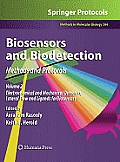Published 7 July 2011
 |
Three Mile Island, Chernobyl, Fukushima: for the third time in twenty-five years a nuclear power plant suffered a serious accident, precipitating a global review of the way to govern nuclear safety and security; a publisher of scientific journal is launching a new journal -- International Journal of Nuclear Safety and Security (IJNSS) -- which will offer a forum for the serious discussion of nuclear power plants' safety
pThree Mile Island, Chernobyl, Fukushima: for the third time in twenty-five years a nuclear power plant suffered a serious accident, precipitating a global review of the way to govern nuclear safety and security.
The 11 March Fukushima accident was especially poignant because it came during — and may well put an end to — what was correctly termed a Nuclear Renaissance: as worries about climate change and the volatility of oil prices grew, interest in nuclear power generation was rekindled.
InderScience Publishers is launching a new journal — teInternational Journal of Nuclear Safety and Security (IJNSS) — which aims to address the growing interest in, and concern about, nuclear safety.
The publisher says that the international community must learn from these accidents in order to improve international co-operation, both in terms of crisis management and prevention of risks. IJNSS will provide an opportunity to exchange information on the implications of safe and secure operation of nuclear power plants and approaches taken by countries worldwide. Full article
Among the topics which will be covered by the new journal:
- Strategic, managerial, organizational issues; total quality management (TQM) and environmental management
- Macroeconomics, nuclear economics and business
- Technological advances, issues, innovation, hazards; role of information and communication technologies (ICTs)
- Analysis/assessment methodologies, performance measurement
- Governance, policy strategy, assessment, review
- National/international environmental protection policy; ecosystem research
- Ecological/environmental impacts; risk assessment/legal aspects of pollution
- Waste disposal strategies; clean technologies
- Energy security and risk assessment; policy, standards and regulations
- Critical infrastructures design, protection, management
- Risk assessment, control, characterization, perception, communications, models
- Integrated risk assessment and safety management
- Nuclear systems management, transport, resource development, power quality
- Public policy, regulations, governance and nuclear use; public attitudes
- Knowledge based policies and education; knowledge transfer


